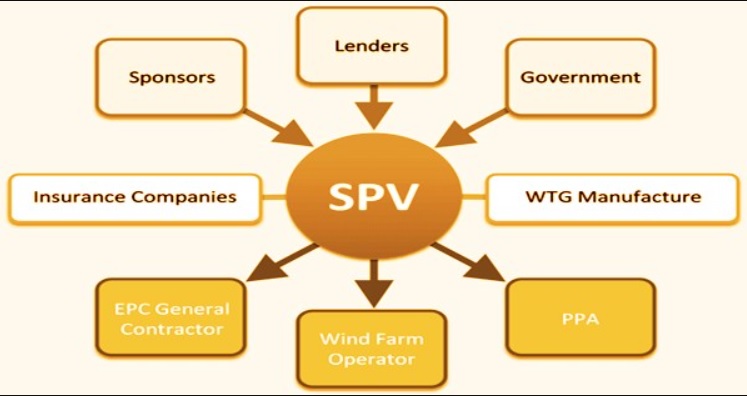What is an SPV in Finance?
An SPV or Special Purpose Vehicle is a separate legal entity that is created by a company to undertake a specific financial activity or project while reducing any negative financial impact on the parent company and its stakeholders. In finance, an SPV is used to isolate risk and provide financial security to the parent company. In this article, we will delve deeper into the concept of SPVs in finance.
What is the Purpose of an SPV in Finance?
The primary purpose of an SPV is to isolate the parent company from financial risks associated with a specific project. SPVs are created to undertake a specific project or investment that is separate from the parent company’s regular business operations. By creating an SPV, the parent company can raise funds for the project without risking the financial stability of the parent company. In the event of a failure, the losses are limited to the SPV, and the parent company’s assets are not at risk.
How Does an SPV Work in Finance?
An SPV is a separate legal entity that has its own balance sheet, management team, and assets. The SPV is created to hold the assets or securities of the project, which are financed by investors. The investors provide the funds to the SPV, and the SPV uses the funds to purchase the assets or securities of the project. The SPV then earns income from the assets or securities, which is distributed to the investors as a return on their investment.
The SPV can also issue debt or equity securities to raise funds for the project. These securities are backed by the assets or securities held by the SPV. The investors in these securities have no claim on the parent company’s assets and are only entitled to the returns from the project’s assets or securities.

Types of SPVs
There are several types of SPVs used in finance, depending on the type of project or investment.
Asset-Backed Securities (ABS) SPVs: These SPVs are created to hold a pool of assets, such as mortgages, car loans, or credit card receivables, and issue securities backed by these assets.
Real Estate SPVs: These SPVs are created to invest in real estate projects, such as development, construction, or acquisition of properties.
Project Finance SPVs: These SPVs are created to finance large infrastructure projects, such as highways, airports, or power plants.
Synthetic SPVs: These SPVs are created to transfer risk from one party to another through complex financial instruments, such as credit default swaps or collateralized debt obligations.
Advantages of SPVs
The advantages of using an SPV in finance are:
Isolation of risk: SPVs protect the parent company’s assets from the risks associated with the project or investment.
Financial security: Investors are more likely to invest in a project if the SPV is used because it provides financial security and limits their risk exposure.
Tax benefits: SPVs can provide tax benefits to the parent company and investors, depending on the jurisdiction and structure of the SPV.
Flexibility: SPVs can be structured in different ways to meet the specific needs of the project or investment.
Disadvantages of SPVs
The disadvantages of using an SPV in finance are:
Complexity: SPVs are complex legal entities that require expertise and resources to set up and manage.
Regulatory scrutiny: SPVs are subject to regulatory scrutiny, especially if they are used for complex financial instruments or in jurisdictions with weak regulation.
Cost: Setting up and managing an SPV can be expensive, especially for small projects or investments.
FAQs
Q1. How is an SPV different from a subsidiary?
A1. An SPV is created to undertake a specific project or investment, while a
subsidiary is a separate legal entity that is fully owned and controlled by the parent company. The purpose of a subsidiary is to expand the parent company’s business operations, while the purpose of an SPV is to isolate risk associated with a specific project or investment.
Q2. What are the legal requirements for setting up an SPV?
A2. The legal requirements for setting up an SPV depend on the jurisdiction and the type of project or investment. In general, an SPV must be registered as a separate legal entity, have its own management team, and maintain its own financial records.
Q3. Can an SPV be used for any type of investment?
A3. No, an SPV is typically used for investments that involve a high level of risk or uncertainty, such as real estate development or infrastructure projects. It is not typically used for investments that are part of a company’s regular business operations.
Q4. What is the difference between an SPV and a trust?
A4. An SPV is a separate legal entity with its own balance sheet, while a trust is a legal arrangement where assets are held by a trustee on behalf of beneficiaries. An SPV is typically used for investments that involve a high level of risk, while a trust is typically used for estate planning or asset protection.
Q5. Can an SPV go bankrupt?
A5. Yes, an SPV can go bankrupt if the project or investment it is created for fails. In this case, the losses are limited to the SPV, and the investors do not have any claim on the parent company’s assets.
Conclusion
In conclusion, an SPV is a powerful financial tool that is used to isolate risk associated with a specific project or investment. By creating a separate legal entity, the parent company can raise funds for the project without risking its financial stability. SPVs are used in various industries, such as real estate development, infrastructure projects, and asset-backed securities. Although SPVs have many advantages, they are also complex legal entities that require expertise and resources to set up and manage.